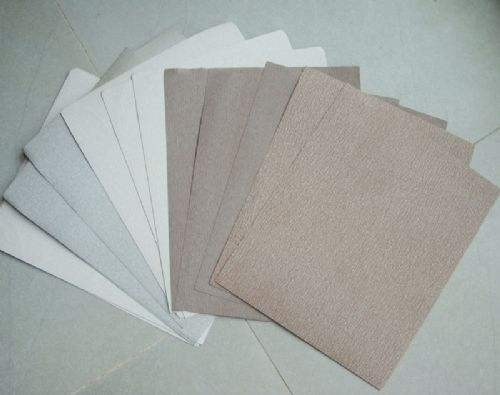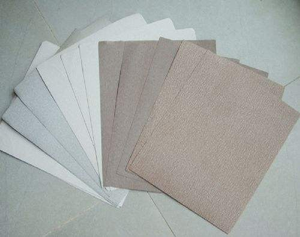
Sandpaper Inspection Method and Standard Guide Inspection Service for Warehousing and Factory Audits
Sandpaper, also known as sandcloth, is a surface treatment material made by gluing abrasive particles onto a base paper. It is widely used for grinding and polishing of metal, wood and other workpieces. Its quality directly affects the processing efficiency and surface treatment effect. To ensure that sandpaper products meet national standards and customer requirements, a full-process inspection system from raw materials to finished products must be established. This article will systematically introduce the inspection methods, factory inspection points and key quality control items of sandpaper, providing practical guidelines for quality inspectors, purchasers and production enterprises.
I. Classification of Sandpaper and Brand System
(1) Classification by Usage and Characteristics
Dry sandpaper (wood sandpaper): Used for dry grinding of wood, bamboo products, etc.
Water-resistant sandpaper (water sandpaper): Resistant to water, suitable for fine polishing with water or oil.
Sandpaper/Sandpaper Roll: The base material is fabric, which has greater wear resistance and is suitable for heavy-duty sanding.
Coated sandpaper: The surface has been specially treated to prevent clogging and has a long lifespan.
Special-shaped tools: such as sand discs, impellers, sponge sands, etc., are suitable for processing complex curved surfaces.
(2) Common Brand References
International Brands: 3M, German Warrior, Japan Research/ Fujisato, South Korea SHC
Domestic brands: Sharp, White Dove, Feilu, Huwei, etc.
II. Quality Standards for Sandpaper and Inspection Basis
(1) Main Standards and Specifications
GB/T 9258-2000 Coated Abrasive Tools - Sandpaper
JIS standard (Japanese Industrial Standard)
Special requirements of the enterprise technical agreement and purchase order
International testing methods: such as 3M TM288 (coarse granularity), TM289 (fine granularity), TM425 (performance usage)
(2) Key Points of Factory Audit Quality Management System
Does it have ISO 9001 certification? Has it established incoming material inspection (IQC), process inspection (IPQC), and outgoing inspection (OQC) systems?
Raw material control
Paper base weight, water resistance; Particle size distribution and purity of abrasives (such as silicon carbide, aluminum oxide, etc.) certification
Environmental testing of adhesives (such as epoxy resin) (whether it complies with RoHS/REACH)
Production process and environment
Gluing uniformity, control of curing temperature and time, and detection of sand particle distribution density
Calibration of testing equipment
The instruments such as the particle size sedimentation instrument, the tensile strength tester, and the wear resistance tester need to be calibrated regularly and records should be kept.
III. Inspection Items and Methods for Finished Products
1. Appearance Quality Inspection
Sand surface requirements: No sand clumps, sand shortages, glue spots, glue leakage, dead folds, oil impressions, etc. are allowed.
Printed label: The back logo and specifications are clear and complete, with no color discrepancies or printing errors.
Cutting quality: The edges are neat without frayed edges, and the size deviation is ≤ ±1.5mm (e.g. 280×230mm)
2. Dimension and Specification Compliance
Sanding paper/sanding roll dimensions: Measure the length and width using a steel ruler or tape measure, ensuring they meet the requirements of the order.
Grain size test: Conducted using sieve analysis or sedimentation methods in accordance with GB/JIS standards, and provide a report on the grain size distribution.
3. Performance Test Items
Water Resistance Test: After being immersed in water at 60℃ for 1 hour, the abrasive material did not fall off.
High-temperature resistance test: Placed in a 200℃ oven for 30 minutes, no cracking or curling occurred.
Tensile strength and flexibility: Compliant with the technical parameter table, ensuring that it is unlikely to break during use
Abrasion resistance test: Using the Schiefer Cut friction tester, the weight loss (such as 3M TM086) was measured.
Resistance to curling: After folding and tearing, immerse it in 20℃ water and observe the deformation.
IV. Sampling Plan and Decision Rules
Sampling Standard: According to GB/T 2828.1, the general inspection level II is adopted. The AQL values can be set as Critical 0, Major 1.5, and Minor 4.0.
Defect Classification:
Serious defects: Inconsistent particle size, lack of water resistance, extensive sand loss
Main defects: Dimension deviation, glue stains and sand clumps, blurred printing.
Minor defects: Minor fraying edges, non-standard packaging labels
Quality inspection judgment: Based on the sampling results and the AQL standard, decide whether to accept or reject the batch. For the non-conforming batches, require rectification or return.
V. Packaging, Labeling and Document Management
Packaging Specifications
The sandpaper should be sealed against moisture. The sanding rolls should be protected with corner guards to prevent edge damage.
The outer box indicates the product model, particle size, quantity, production date and moisture-proof mark.
Document and Traceability Requirements
For each batch of products, a certificate of conformity, a particle size test report, and a Material Safety Data Sheet (MSDS) must be provided.
Establish a batch management system to ensure that defective products can be traced back to the production process.
Inspection Record and Report
The inspection report should include the sample size, defect statistics, test data and on-site photos.
For important customers or new suppliers, it is recommended to conduct a comprehensive performance inspection (including environmental protection indicators)
VI. Common Issues and Quality Improvement Suggestions
Typical Defects: Uneven distribution of sand particles, aging and sanding of adhesives, insufficient water resistance of the base paper
Process control points: It is recommended to set up SPC control points at the positions of gluing, sanding, and curing.
Factory inspection improvement direction: Promote the application of automated testing equipment and strengthen the review of suppliers' raw material qualifications.
Summary
Sandpaper serves as a fundamental grinding tool, and its quality consistency is of vital importance for the processing quality and cost control of downstream users. By strictly implementing inspection items such as appearance, particle size, water resistance, and wear resistance, combined with a sound factory inspection system and supply chain quality management, the product qualification rate and market competitiveness can be significantly enhanced. It is recommended that purchasers clarify technical standards before placing orders, conduct mid-process inspections during production, and carry out third-party testing and verification for high-risk projects to ensure that the products meet the expected requirements.
Share this product

Sandpaper Inspection Method and Standard Guide Inspection Service for
A surface treatment material made by grinding particles on the original paper, which is widely used for grinding and polishing of metal and other workpieces.
